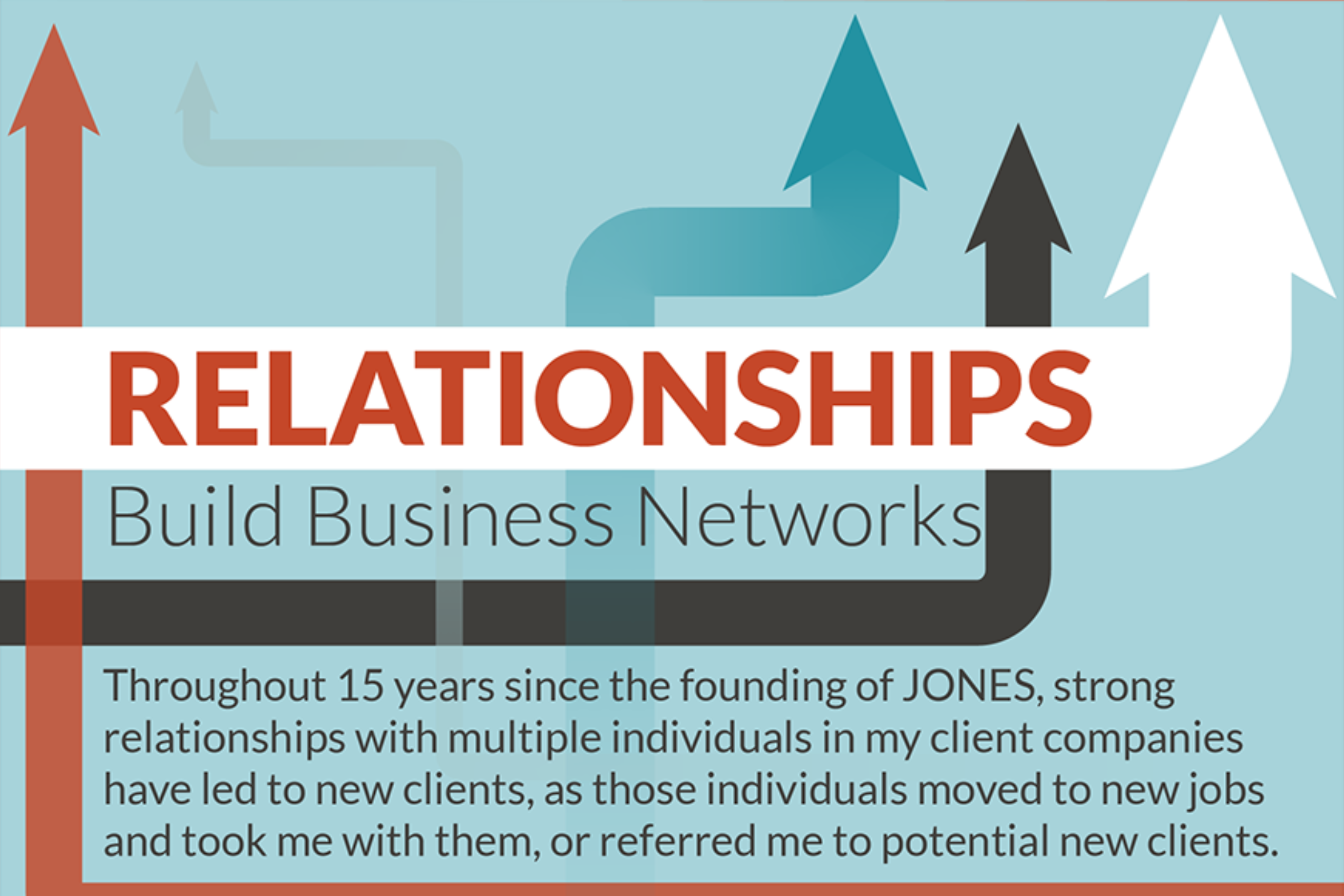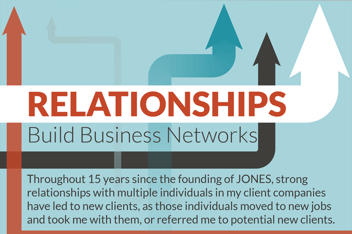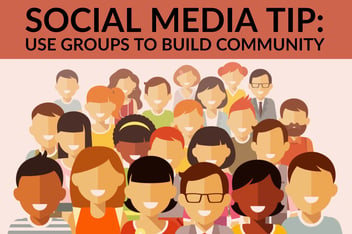Lessons from 15 Years: Today’s Strong Relationships Are Tomorrow’s Enduring (Or New) Accounts
%20Accounts.png?width=2550&name=Lessons%20from%2015%20Years_%20Today%E2%80%99s%20Strong%20Relationships%20Are%20Tomorrow%E2%80%99s%20Enduring%20(Or%20New)%20Accounts.png)
Did you know that the average client-agency relationship in the marketing and PR world is 3.2 years or less? That’s really not much time when targeting strategies and campaigns that can extend for months and generate results years down the road. And with turnover that rapid, it means that the average agency is spending a lot of time prospecting and trying to land new contracts to replace the ones that are closing.
(Sources: The Drum and Bedford Group Consulting)
What would happen if the energy dedicated to finding new accounts was instead focused on building relationships that maintain the clients you already have and increase the likelihood that the contacts you have in those businesses may bring you even more business in the future?
This post is one in a 15-part series looking back at the lessons learned in my 15 years as founder and owner of JONES Marking & PR. Find earlier posts in the series here:
My Marketing Lesson #2: When you build strong relationships, clients stick with you and contacts take you with them to new jobs.
Much of the success and stability JONES has experienced during the last 15 years is a result of building strong relationships that have led to long-term clients and a succession of new business accounts gained when a contact from one client company changes jobs and moves to a new company.
Our longest relationship is with West Corporation, a company I have been proud to work alongside for more than ten years — and counting — through changes in both its structure and ours. Several other clients have also stayed with JONES for well beyond the average three-year lifespan of a client-agency relationship.
We worked with ACI Worldwide for more than eight years, Bellevue University for more than five years, and with Network General for four years before they were acquired by another company.
Just as importantly, by developing strong relationships with everyone I worked with in our clients’ companies, JONES gained new accounts as executive, marketing and PR professionals in those companies changed jobs. Four different contacts at PeopleSoft took me with them as they moved on to new positions, yielding new business relationships for JONES with Network General, Workday, MobileIron, Qualcomm, and Illumina, plus a referral that led us to working with Laurel Springs School.
The same thing happened with contacts I originally made through many other contracts. Not all of those individuals were my primary contact at the original company, but my relationships and reputation encouraged them to reach out to me when the time came to choose an agency partner.
Building strong relationships isn’t always easy. It does require give and take from both sides, and I’ve made a few mistakes along the way. But what I’ve learned is that when you treat your clients with respect, and expect the same from them, you’ll build the right relationships for long-term success.
How I Build Strong Relationships
1. I never side burner a client.
Some clients are bigger than others. That’s just a fact. But, every client deserves full focus and attention. When I’m with a client, they are my only client, regardless of the size of their company or contract.
While many large agencies assign what they see as less lucrative contracts to a “B Team” of staffers — junior staff members, interns, or less talented creative pros — we don’t have a “B Team.” We don’t hire junior staffers. Every single person on the JONES team has a minimum of 10 years of experience, ensuring every client we work with is served by highly-qualified professionals, with the same emphasis of providing high-quality content and results on schedule every time.
2. I do what I say I will do (and maybe even just a bit more).
It seems like something I shouldn’t have to point out, but unfortunately, it isn’t as common or intuitive as you would think: Do what you say you will do. My clients have learned that I will follow this both in terms of output and results — meaning if I say we will deliver four videos, we deliver four videos, and if we say we will place ten thought leadership articles, we get ten placements. We won’t stop at six because it was difficult and expect our clients to accept that.
Quite often, we will also give just a little bit more.
One of the reasons we can consistently do what we say we will do is because we know what it takes. See Point #4 below (don’t overpromise and underdeliver). And watch for an entire lesson later this year on how my obsession with time tracking pays off in many ways.
3. If I make a mistake, I own it.
We all make mistakes. If someone tries to claim that it never happens, you can be certain that they will find some way to blame any mistake they do make on someone else. Possibly on you.
Because I want to build lasting relationships, rather than try to hide or deflect mistakes, I own up to them and then make them right. Being honest with clients is always the right thing to do.
4. I don’t overpromise and underdeliver.
Sometimes agencies are so desperate to sign clients that they make big promises in order to get the business. Signing new clients isn’t easy, so it can be tempting to say whatever it takes. But when an agency makes those promises and then isn’t able to deliver on them, they find themselves back on the hunt for new business because the first client was disappointed and gave them the boot.
I would rather earn a company’s business by setting realistic expectations and then keep it by exceeding those expectations. Underbidding, or over-promising, may win clients, but it often results in an unhealthy relationship because either the agency can’t do the work for the budget established or the quality of work isn’t what the client expects.
5. I set expectations and boundaries, and I know my worth.
Speaking of expectations, being realistic about promised production, results and budgets also means establishing boundaries about what clients can expect from me and my team. Over-servicing clients, or accepting a lot of additional work without additional time or budget, is a recipe for burnout on the part of my team and potentially a loss for my business. I’ve learned this lesson the hard way.
In my early days as an agency owner, I took on clients who took advantage of my desire to deliver great work, pushing for more and more on an existing budget, until the day I realized I was paying more to my staff than the clients were paying me. The mistake was on both sides: the client companies were constantly asking for more without wanting to pay for it, and I let them get away with it until there was no way to turn it around. I ended up having to “fire” clients in order to maintain the profitability of my agency.
A bit older, a bit more experienced, a bit more confident, I now set expectations from the start about what is included, what it costs, and what my agency’s time and expertise are worth. Profitability isn’t all in billing and gross revenue. Client selection is key; I choose to work with clients who will not abuse my agency. If they don’t respect JONES and the boundaries of our agreement, I can’t continue to work with them.
6. I believe in being a partner and advisor, and in telling it straight.
While I do work for my clients, I believe even more strongly in working closely with them. Collaboration is a key component of creating successful integrated marketing and public relations strategies, including involvement from my team and representatives of many segments of the client company’s leadership: marketing, PR, customer service, financial, and executives.
I don’t believe the “agency knows best” or that a big reveal is the way to introduce a new brand position, marketing strategy or campaign plan.
I do, however, believe that our broad range of experience and outside perspective does give us insights that in-house teams may be missing. That is one reason they turn to JONES. And it is my duty to give them the best advice possible, even if that advice is something they would rather not hear.
7. I keep a level head and am willing to navigate the highs and lows.
All relationships go through highs and lows, and client-agency partnerships are no different. But if you’ve built a strong foundation, and the relationship is a good fit, it is worth working through the challenges to stay together.
I have seen client contracts increase, decrease, and then increase again. I’ve waited on executive teams to set budgets and make decisions. I’ve been flexible and adjusted when I can, when the relationship was built on a strong foundation. I’ve told clients “I’m here for you in whatever way you need me right now.”
Being willing to navigate the challenges includes understanding how different companies work. Start-up and tech companies make decisions more quickly, may change gears frequently, and keep you on your toes. Decision-making takes longer at larger, more mature companies, but while that may leave you sometimes tapping your toes in impatience, the payoff is in the stability and larger budgets these companies often offer. Either way, I believe you should do what you can to stick with the clients who fit your agency and respect what you bring to the table.
Some of these rules for building business partnerships that last and that extend on to new settings are very similar to the rules of any relationship: honesty, mutual respect, and being willing to engage in give and take (more often a little more give, but not too much). I firmly believe these rules are key to the lasting relationships that I have had personally and through JONES with both companies and individuals we’ve worked with during the last 15 years.
You may have other relationship rules that have served you well in business. I’d love to hear more about how you have built the relationships that keep clients or customers happy and encourage them to offer referrals. Another component of building relationships is to never stop listening and learning — I want to learn from you. Please share your rules for building better business partnerships in the comments.
Don’t miss the other lessons I’ve learned over the last 15 years as a public relations and marketing agency owner. This is the second in a series of blog posts planned throughout 2019. The first lesson I shared was this: If You Are Curious, You Can Make Anything Interesting. (See the complete list of lessons I’ll cover here); subscribe to the Inbound Accelerator so you won’t miss a single one.

-1.png?width=1652&height=294&name=Jones(RGB)-1.png)












